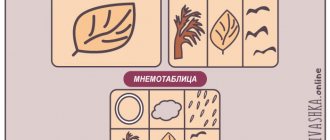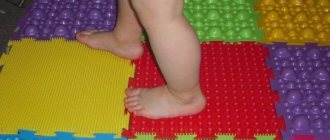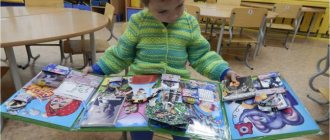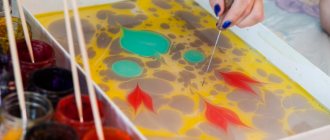Unconventional methods and techniques for working with fairy tales
Unconventional methods and techniques in working with fairy tales.
Lysenko Ekaterina Ivanovna,
teacher of MBDOU Irkutsk kindergarten No. 8
Let's remember our childhood! What did you love when you were little? When I was little, I loved warm family evenings; the whole family gathered together and the love and care of the parents was constantly felt. I could listen and read works of art for a long time, but most of all I liked fairy tales that “carried me away” to this magical, amazing world.
Today, we often hear that children do not like to read; they have become hostages of computers and televisions. So who is to blame for this? I believe that, first of all, we, the adults, are to blame. It is we who do not pay enough attention to awaken a child’s love for books. Many parents themselves, not feeling the need to read, do not understand that by not reading to their child, they are missing out on important moments in their life. After all, by reading, we give the child a feeling of warmth and calm, leave unforgettable impressions of childhood in their souls, cultivate a love for books and thereby help them become readers. How to avoid these mistakes and foster a love of books and reading in a child? And this is where the treasure of folk wisdom comes to our aid - the Russian folk tale. Fairy tales are an invaluable experience acquired by generations and passed on to us and our children in a simple, accessible, playful form. And I hope that the use of unconventional methods and techniques in working with a fairy tale will help you maintain your child’s interest in books and reading:
1. Compilation of a dictionary based on the fairy tale.
The teacher introduces the children to new words from the fairy tale, and then together with the children they paste pictures with their images, for example: barn, susek (fairy tale “Kolobok”), etc.
In subsequent work with the fairy tale, children, looking at the pictures, try to explain their meaning themselves.
2. Making a book based on a fairy tale.
Target. Enriching children's speech with emotionally charged vocabulary and aesthetic terms through knowledge of the content of the fairy tale. Development of creative imagination, color perception, fine motor skills. Raising children's interest in creating books.
3. Name the hero.
Target. Teach children to unite heroes according to a given characteristic, develop memory, attention, and interest in fairy tales.
Description. The teacher names an image, and the children must find specific heroes from other fairy tales, for example - Name me the boy heroes (Kai from “The Snow Queen”, Pierrot from “The Golden Key”).
4. Actions of the hero.
Target. Teach children to list all the possible actions of a fairy-tale character. Teach children to draw analogies in the actions of heroes of different fairy tales.
Description. For example, the fairy tale “Kolobok”. The teacher asks the children to name all the actions of the kolobok, saying only verbs: sang, left, rolled, etc. Next, the teacher suggests remembering the heroes who would perform the same actions in other fairy tales.
5. Let's help the hero.
Target. Development of coherent speech, thinking, interest in fairy tales.
Description. The teacher invites the children to put themselves in the place of the hero: What would you do in such a situation?
6.Step by step.
Target. Consolidation of knowledge of fairy tales, development of speech, memory, thinking.
Description. The teacher says the name of the fairy tale, and the child walks around the group and at each step names a hero from this fairy tale.
7. Help the hero find his fairy tale.
Target. Consolidation of knowledge of fairy tales, development of speech, memory, attention.
Description. On the tables are plots from 2-3 fairy tales. The teacher hands out pictures of fairy-tale characters to the children, and the children bring their own fairy-tale hero to each story.
8. Meeting with the hero.
Target. Development of coherent speech, creative abilities, thinking.
Description. The teacher invites the children to imagine that they have met the hero of a fairy tale. – What do you ask? What do you think the hero will answer?
9.We will send an SMS message.
Target. Development of coherent speech, thinking, interest in fairy tales.
Description. The teacher invites the children to “write” a wish for the hero of the fairy tale in an SMS message.
10. Find out the fairy tale by the heroes’ song.
Target. Development of children's speech, consolidation of knowledge of songs, nurturing interest in Russian folk tales.
Description. The teacher invites the children to learn the fairy tale from the hero’s song, for example: ∙ Open up, open up! ("The wolf and the seven Young goats").
11. Fairytale words.
Target. Teach children to list different variants of words and phrases based on a given characteristic.
Description. The teacher invites the children to remember and say all the spells that they know in fairy tales (Sim-sim, open the door, Sivka-burka, prophetic kaurka... etc.) then list all the words with which the fairy tale begins (Once upon a time in a certain kingdom , in ancient times...etc.).
12. Show with facial expressions and gestures.
Target. Teach children to convey the character traits of the hero through facial expressions and gestures, develop imagination and observation.
Description. The teacher invites children to demonstrate their emotional attitude towards the hero or situation using facial expressions or gestures.
13.Casket.
Target. Development of speech, memory, thinking.
Description. The teacher offers to fill the box with character traits, wishes, etc. For example: Collect in a box everything that the hero needs from your point of view, everything that will help him in the future.
14.
What would happen if...
Goal. Development of children's creative abilities and coherent speech.
Description. The teacher invites the children to come up with and continue a sentence, for example: What would happen if the bun rolled away from the fox?
15. True - false.
Target. Consolidating knowledge of fairy tales, developing coherent speech, and the ability to listen carefully to each other.
Description. The teacher reads the sentence, and the children must agree or disagree. For example: Grandfather by the turnip, granddaughter by grandfather, they pull, pull, but cannot pull. The granddaughter called the mouse. The hen laid an egg, not an ordinary one - a golden one.
16.
Good or bad.
Target. To develop the ability to find positive and negative sides in any object or situation.
Description. For example: The mouse came running to pull out the turnip. This is good. Why? (The mouse helped pull out the turnip.) This is bad. Why? (The cat could have eaten the mouse).
17.
Advertising.
Target. Development of coherent speech, thinking, interest in fairy tales.
Description. The teacher invites the children to advertise (tell) why they liked the fairy tale.
18. Collect a chain.
Target. Activate vocabulary, learn correctly, perceive the content of a fairy tale, develop attention and memory.
Description. The teacher invites the children to choose a fairy tale from which they will collect a chain. Then the children retell the collected fairy tale. Then all the children participate in the retelling of the fairy tale, continuing the plot along the chain.
19. Wizards Ear, Nose, Hand and Eye.
Target. Teach children to imagine sensations that can be obtained using various analyzers.
Description. The teacher one by one shows pictures depicting sensory organs and offers to use them to visit a fairy tale. Example: With a magic Nose, the children got into Naf-Naf's room when he opened the lid of the cauldron. Children talk about what they smelled (the smell of soot, wolf fur, boiling water). Further, the Wizard of the Eye is invited to the same plot (children see what is not described in the fairy tale), the Wizard of the Ear (imagining possible sounds, voicing thoughts), the Wizard of the Hand (describing the sensations that children would have if they touched hot water with their hands boiler or wet nose of piglets.
20. False alternative.
Target. Development of attention and coherent speech.
Description. The teacher asks questions using the words “either-or”, but none of the proposed answers are correct. For example: Who laid the golden egg - the duckling or the chicken? Who crushed the tower - a hare or a wolf? Who helped pull the turnip - grandpa or grandma?
21. Circles of Lull.
Target. Strengthen knowledge of the texts of familiar fairy tales. Learn to change the text of a fairy tale depending on the introduction of new objects. Development of imagination, creative approach to action, logical thinking, ability to solve emerging problems.
1.
Description. 1st circle – pictures depicting scenes from various fairy tales (swamps, forests, rooms, villages, wonderful gardens); 2nd circle – children independently fill in pictures with images of fairy-tale characters. - Choose a hero, remember the name of the fairy tale and find the place where the plot unfolds. (Baba Yaga lives in a forest hut). - Spin the circles and tell me, the plot from which fairy tale is under the arrow? Name the hero and his new location. (Kolobok lives in the village).
2.
Description.
On the 1st circle there are pictures depicting fairy-tale characters. On the 2nd circle, the character traits of the heroes are schematically indicated. –
Choose a hero and combine it with your main character trait. (The fox is cunning). – Spin the circles and tell me, which fairy tale hero ended up under the arrow? Name the hero and combine him with a new character trait. (Baba Yaga from the fairy tale “Geese and Swans” became cheerful).
22. Using a mnemonic table in working with a fairy tale.
1. when retelling fairy tales
, for example the fairy tale “Turnip”.
When retelling with the help of a mnemonic table, children see all the characters, and concentrate their attention on the correct construction of sentences, on reproducing the necessary expressions in their speech. You can also invite children to come up with and sketch their own ending to a fairy tale in a mnemonic table.
2. in various games:
"Draw a fairy tale"
Target:
teach how to make a drawing plan for a test and use it when telling stories.
Progress of the game
. Children are read a fairy tale and asked to write it down using drawings. Thus, the child himself produces a series of sequential pictures (mnemonic tables), based on which he then tells a fairy tale. The story should be short.
“Where is the beginning of the story (fairy tale)?”
Target:
teach to convey the correct temporal and logical sequence of a story using cards from a mnemonic table.
Progress of the game
. The child is asked to lay out the cards and make up a story. Cards allow you to accurately convey the plot, from beginning to end.
“Which card is not needed?”
Target:
teach to find details that are unnecessary for a given story.
Progress of the game.
Cards are laid out in front of the child in the correct sequence, but one card is taken from another set of the memo table. The child must find an unnecessary card, remove it, and then make up a story.
In conclusion, I would like to say: read and analyze fairy tales with your children, apply methods and techniques in working with fairy tales, thereby you will help the child realize that good triumphs over evil, teach them to overcome difficulties, and cultivate a love of books and reading. With the help of a fairy tale, you will increase the level of speech development and creative abilities of the child, which is very important when preparing for school. And most importantly, you will leave an indelible impression on your child from communicating with you.
Literature
1. Bolsheva T.V. “We learn from a fairy tale. A manual for kindergarten teachers." / S – Pb., “Childhood – press”, 2001.
2.Dyachenko O.M. “Methodology for the development of creative imagination, ed. Tkachenko, T.A. A large book of tasks and exercises for the development of a child’s coherent speech. A manual for kindergarten teachers" - M.: Eksmo, 2006.
3. Propp V.Ya. "Morphology of a fairy tale."
4. Sidorchuk T.A., Lelyukh S.V. “We explore the world and fantasize with Llull circles. A practical guide for classes with children aged 3-7 years.”
5. Fesyukova L.B. "Education with a fairy tale."
Using the fairytale therapy method in working with preschool children
In the morning, waking up and getting ready to go to kindergarten, the girl thought: “It’s good in kindergarten!” And, taking the bag with the cubes, she joyfully ran to catch up with her mother.
Fairy tale 3. If a child is afraid that his mother will not take him.
One day Bunny and the mother bunny were going to kindergarten. Bunny was very worried and upset that his mother would not pick him up from kindergarten in the evening. He kept asking: “Mom, will you pick me up in the evening?” - “Of course, I’ll pick you up, Bunny. I’ll definitely come get you after work.” But Bunny still couldn’t believe it and asked again and again.
The Baby Elephant accidentally overheard this conversation. He went to the same group as Bunny, and asked Bunny during a walk:
- Bunny, are you really afraid that your mother won’t take you home?
“Yes, I’m very afraid that mom will leave me here,” answered Bunny.
To this the Baby Elephant said:
- What are you talking about, Bunny? It can not be so. All the children are taken home by their mothers and fathers in the evening. At night the kindergarten is completely empty. Only in the morning do the children come.
Bunny asked:
- Completely, completely empty?
The little elephant replied:
- Quite quite. Children only come to kindergarten in the morning. Let’s see in the evening whether they will take absolutely all the children home.
When the animals had dinner in the evening, Baby Elephant and Bunny began to wait to see who would be taken first. On this day, the first cat was taken away. Mom came for her. Then they took a bear cub, a lion cub, a squirrel, a rabbit, a mouse and a penguin. Everyone was very happy that mom and dad came for them. Who was taken away last, Elephant and Little Hare were not able to see, since their mothers also came for them. And they happily ran home. Bunny liked this moment so much when his mother took him home in the evening. He was so happy and in the evening he told his mother what interesting things had happened to him all day in kindergarten.
Fairy tale 4. If a child does not want to sleep in kindergarten.
Once upon a time there was a crib. She lived in a group kindergarten and stood in the bedroom among other cribs. In the fall, children came to the group. Many cribs were made with baby bedding and they became beautiful. And children began to come to them. They lay down in their cribs, and the cribs warmed them. The babies felt good and warm in their cribs, and they fell asleep. The cribs were very happy. And only one crib did not have a baby, and she was very sad. She had no one to warm her, she was bored and lonely. And then a new girl appeared, who was placed in this crib. The crib was so happy. The girl was very cute, beautiful, kind. The crib was happy. She was really looking forward to the girl coming to her. And when the girl came, the crib tried to quickly warm her and give her sleep. But the girl suddenly stopped liking sleeping in the garden. Lying in bed, she constantly asked about her mother. The crib was very upset, she tried her best to warm her, calm her down, so that the girl would fall asleep. But the girl did not sleep. The crib began to fear that the girl would not want to sleep at all, and she would be left alone again. This made her very sad, because she was already so used to this good girl, she loved warming her so much. The crib was created to give children sleep. Every crib dreamed of doing this. And our crib too. And you also have a crib in your kindergarten. She is really waiting for you, she loves to warm you and is happy when you sleep in her.




